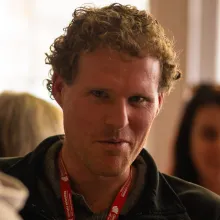Oceanic internal waves: energy, mixing and momentum
The ocean is a sea of internal gravity waves. Similar to the gravity waves that propagate over the ocean surface and break along our coastlines, internal waves propagate great distances through the ocean interior. These waves are generated at the ocean surface and the seafloor by a variety of mechanisms. As the...
Project status
Content navigation
About

The ocean is a sea of internal gravity waves. Similar to the gravity waves that propagate over the ocean surface and break along our coastlines, internal waves can propagate great distances through the ocean interior. Internal waves are generated at the ocean surface and the seafloor by a variety of mechanisms. The wave carry substantial amounts of energy and momentum. As the waves propagate, they interact with the ocean currents, fronts, jets and eddies. These interactions often involve an exchange of energy, either to or from the wave, and transfer of momentums. The location and direction of these energy and momentum exchanges tell us about the pathways by which energy moves through the ocean system from the very largest scales where it is injected by tides and winds, to the very smallest scales where it is dissipated as heat, and the role of waves in forcing larger-scale flows.
For an introduction to the physics of internal waves see this Physics Today article.
A number of projects involving the theory and/or modelling and/or laboratory experiments of internal waves are available for students at different levels (e.g. undergraduate projects, Hons, MSc, PhD) with an interest in applied mathematics/physics/climate science/oceanography.
An example of one of our laboratory experiments available for students is the internal wave generator shown in this video.

Helpful skills: strong mathematics/physics background (essential), experience with scientific analysis software like Matlab/python (useful but not essential), experience with unix and coding (useful but not essential), laboratory experience (useful but not essential).
Contact: Dr. Callum J. Shakespeare


